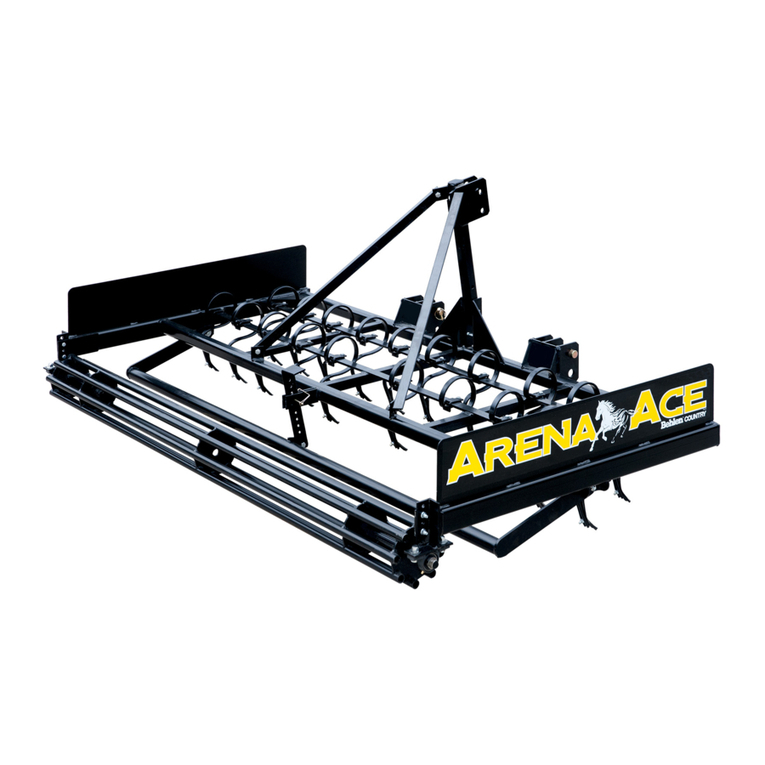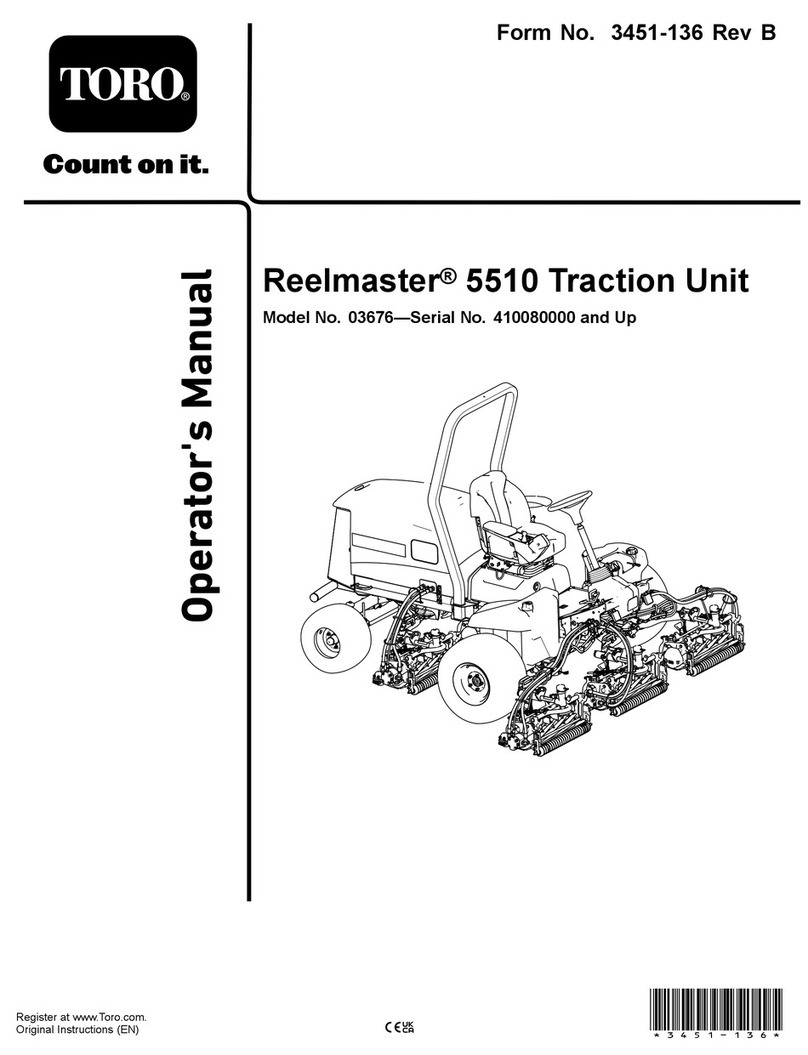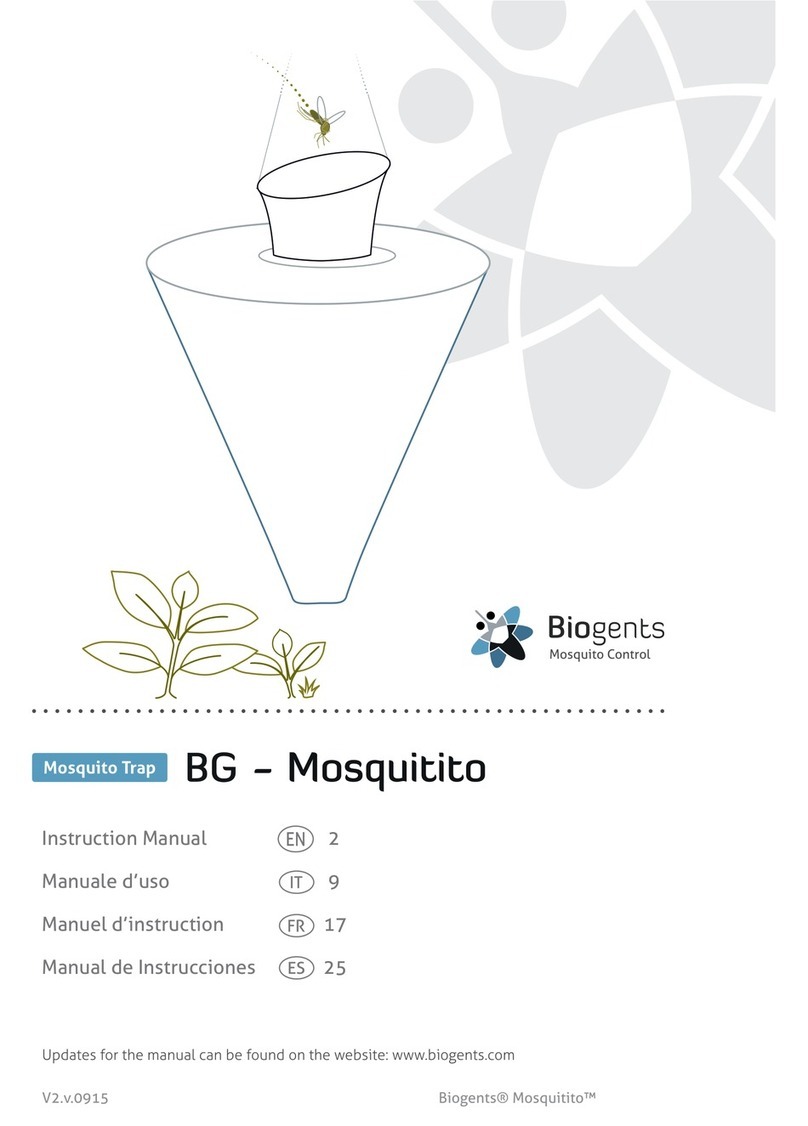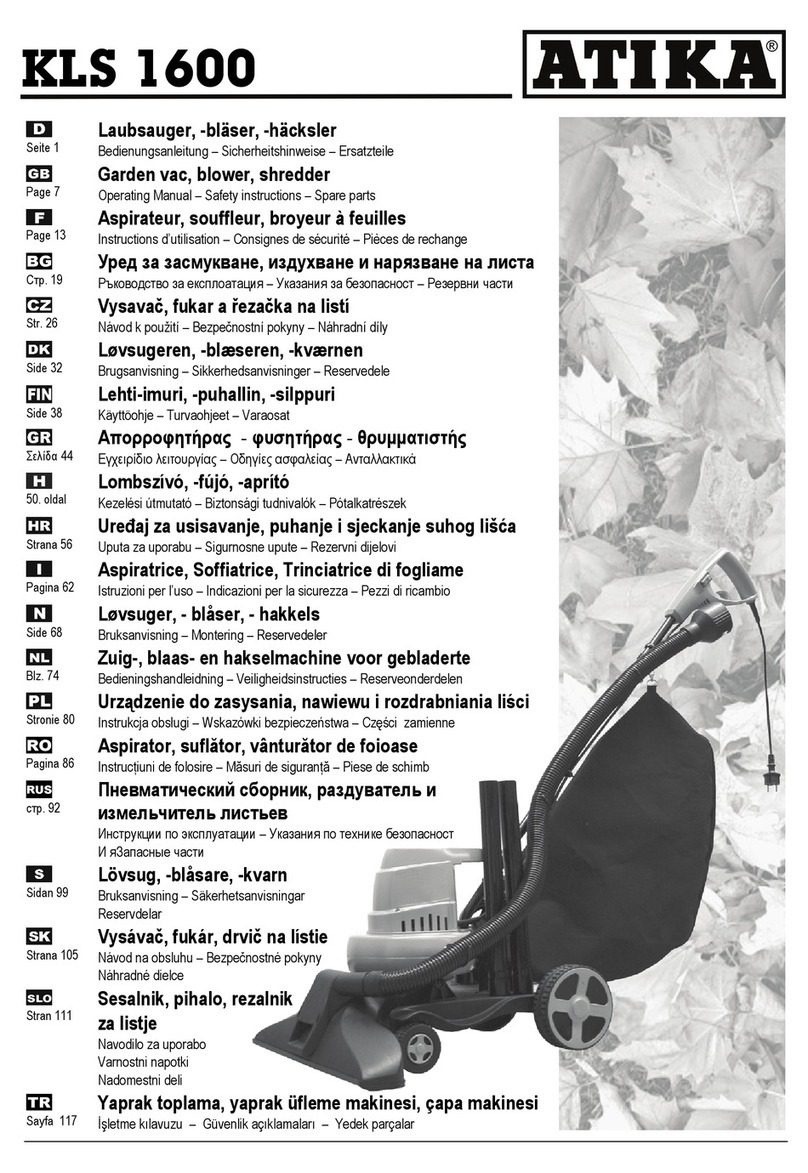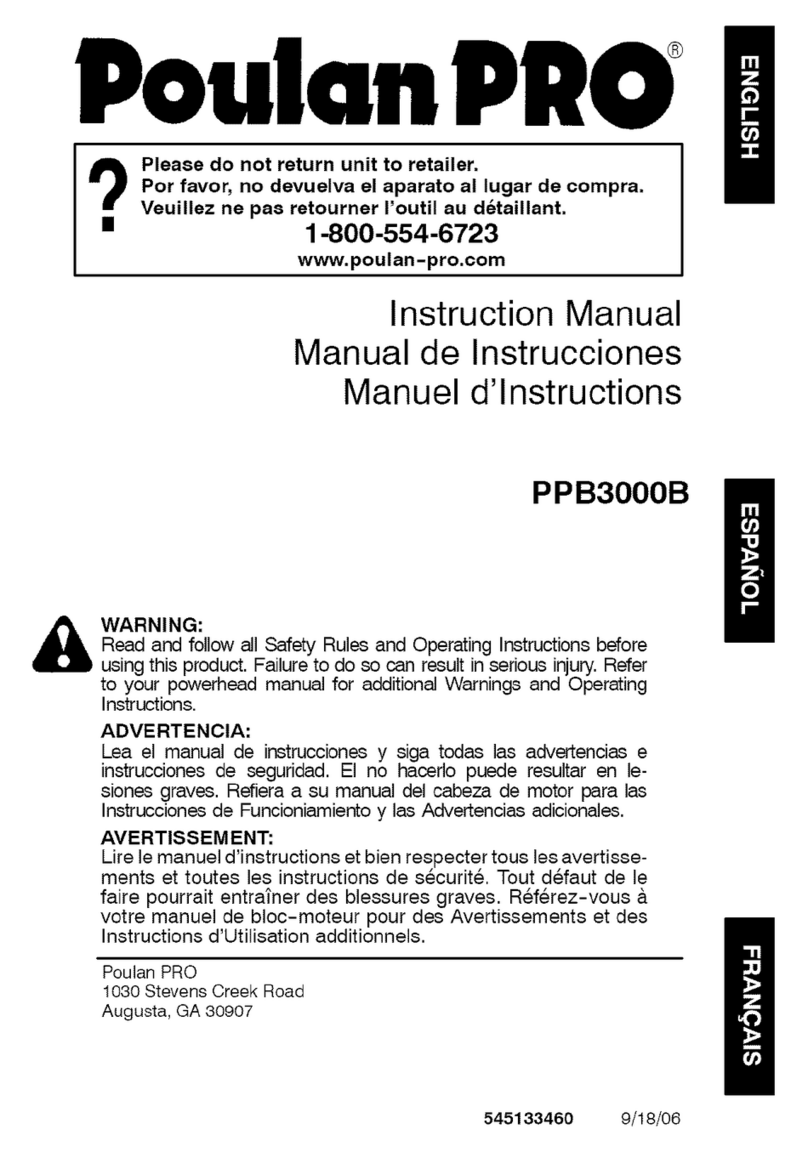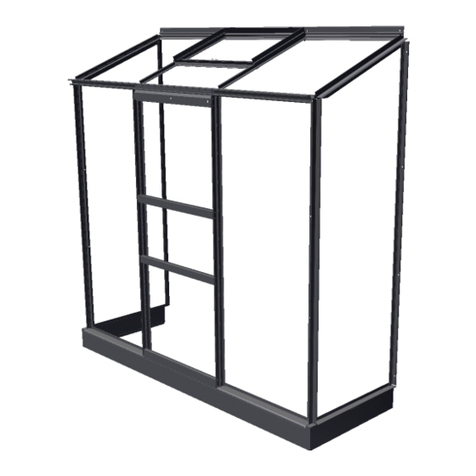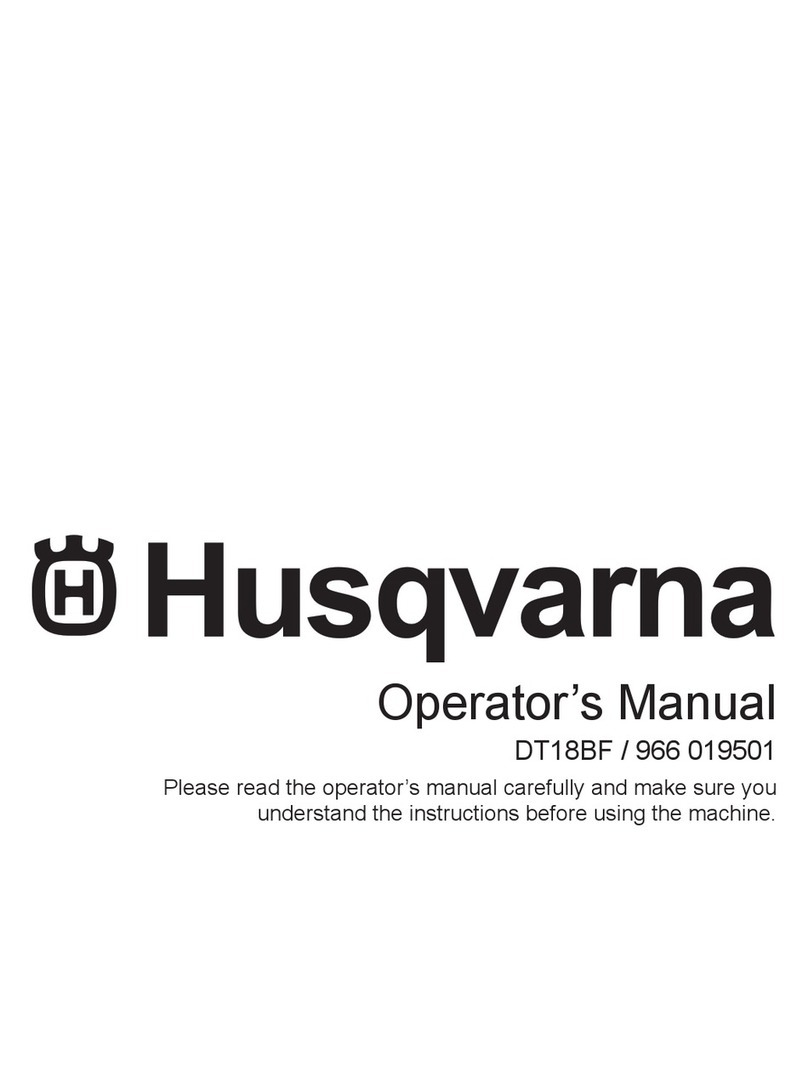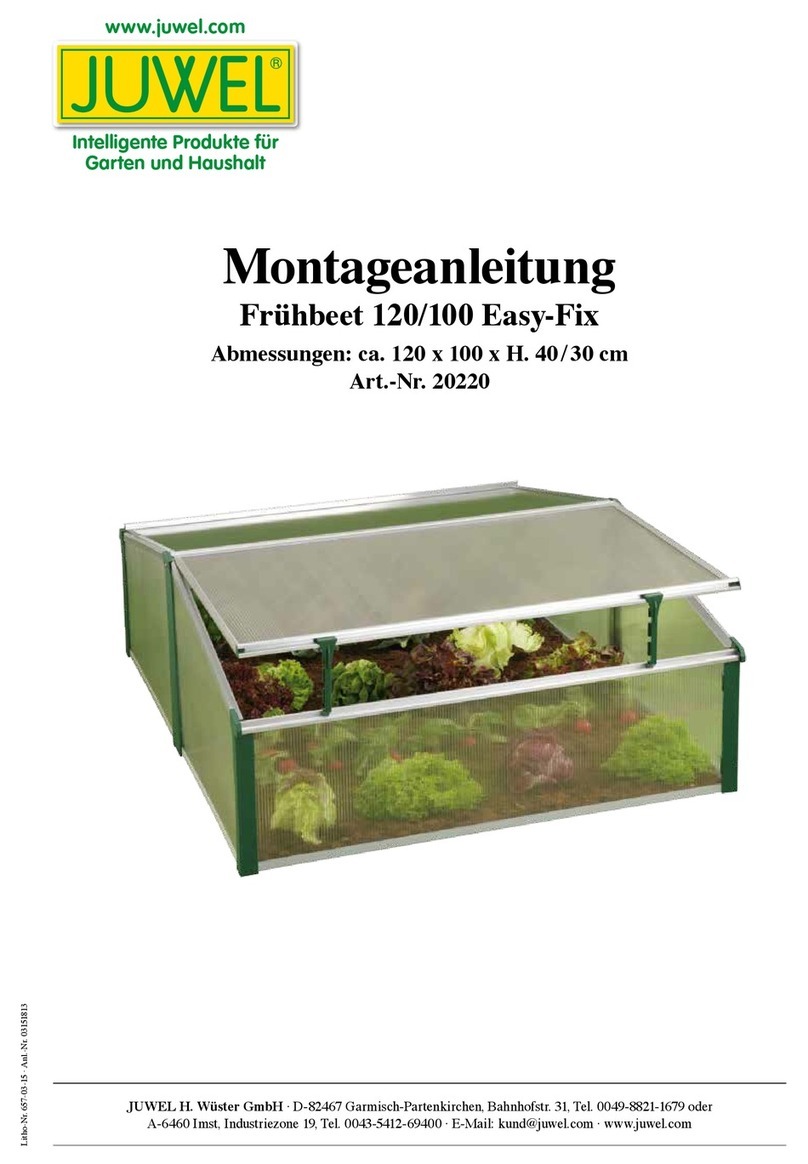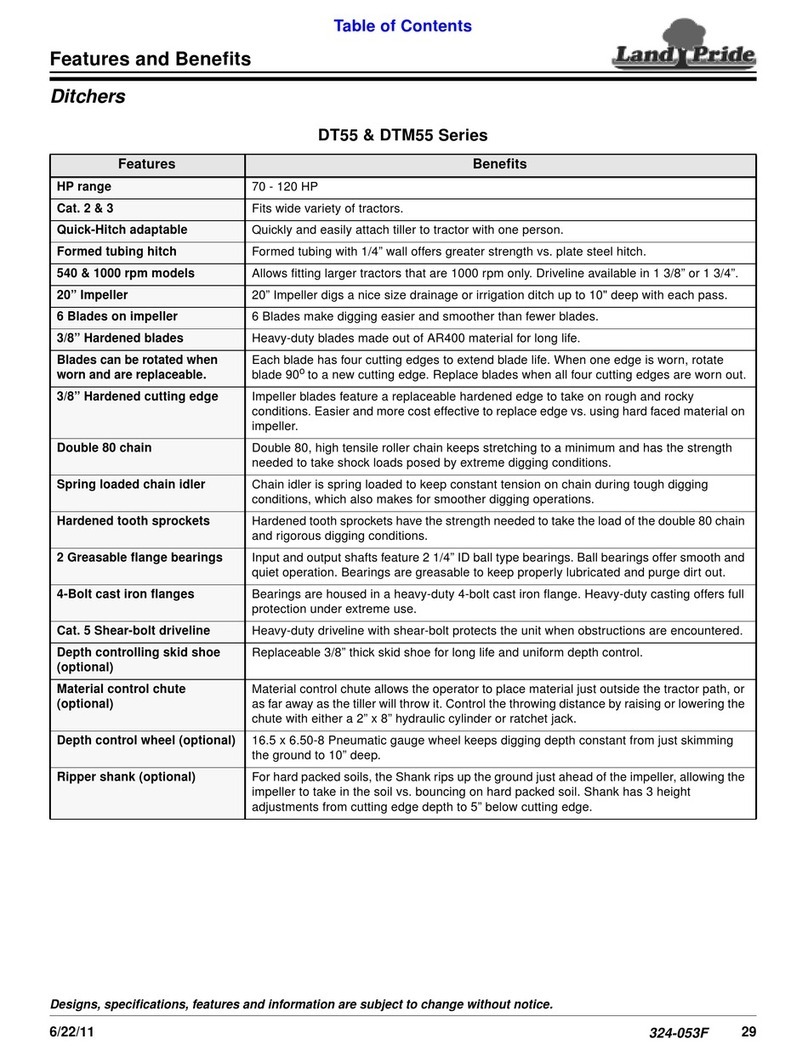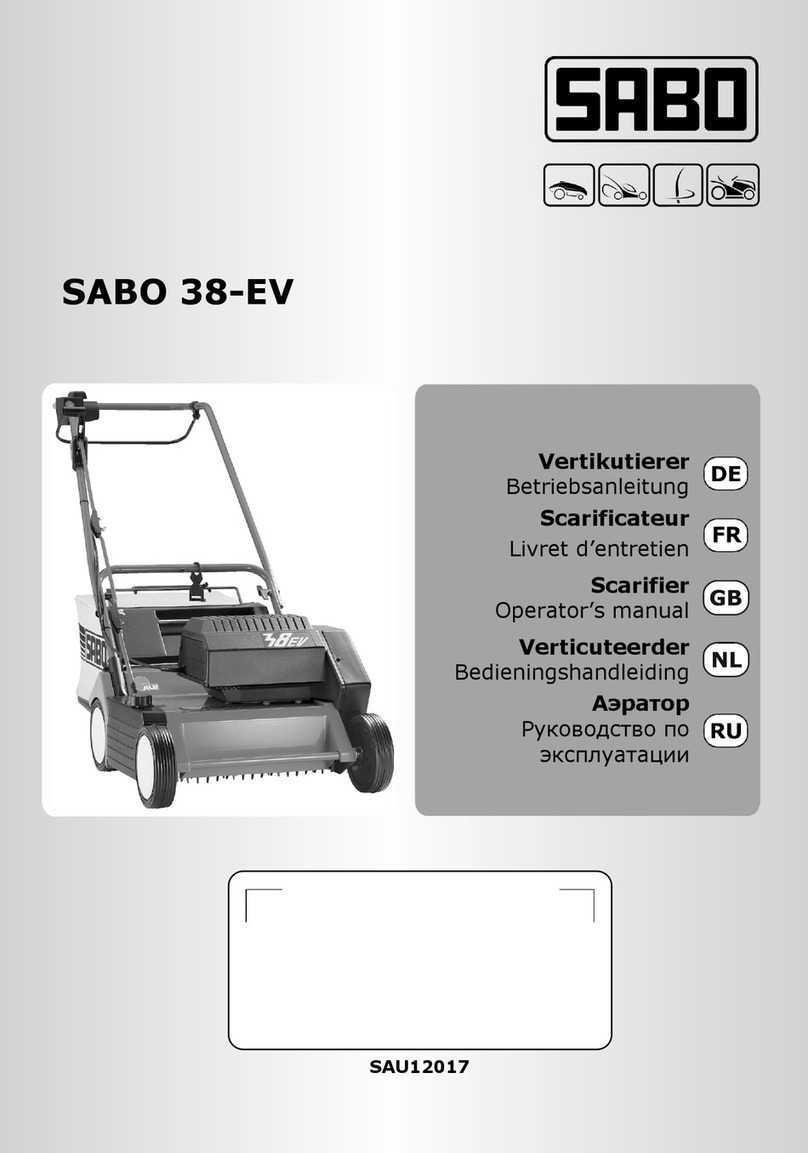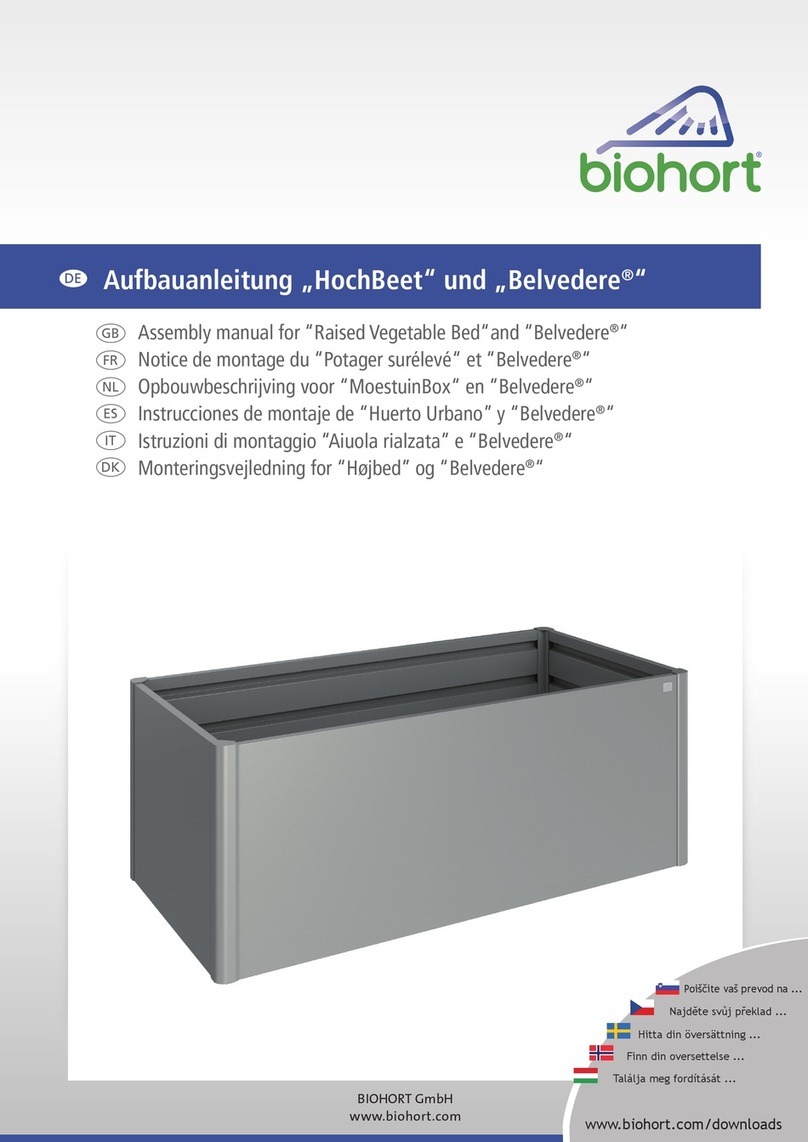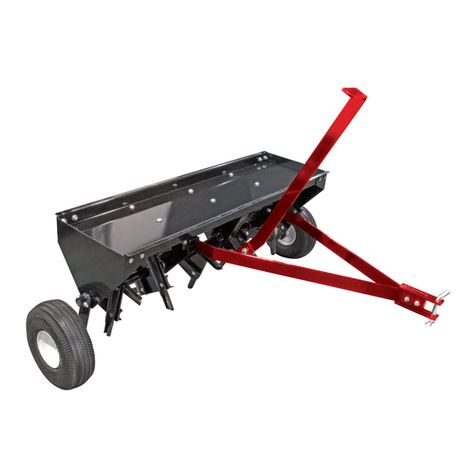Behlen Country 80900190 Installation instructions

THANK YOU FOR PURCHASING THIS PRODUCT
Congratulations on your purchase. Behlen Country has been in the business of providing
quality equipment to landowners for more than 75 years. Our 3-Point Equipment will provide
many years of service when maintained by the operator and used in accordance with the
capabilities of the product. For questions about this product, or for parts inquiries,please
contact our Customer Service Center listed below.
This manual contains valuable information
about your new Rotary Tiller. It has been
prepared to give you helpful suggestions for
safety, operation, adjustment and service.
It is the owner’s and or operator’s
responsibility to:
• Read and understand the information
contained in this manual. The use of this
equipment is susceptible to certain hazards
that cannot be protected against by mechanical
means or product design. All operators of
this equipment must read and understand
this entire manual, paying particular attention
to safety and operating instructions, prior to
using.
• Operate, lubricate, assemble, and maintain
the equipment in accordance with all
instructions and safety procedures in this
manual.
• Inspect the equipment prior to each use and
replace or repair any parts that are worn or
damaged.
TO THE CUSTOMER
ASSEMBLY, OPERATION, & MAINTENANCE INSTRUCTIONS
Rotary Tillers Hardware Kit
80900190
It is the policy of Behlen Country to improve its products where it is possible and practical to do so.
Behlen Country reserves the right to make changes or improvements in design and construction at
any time, without incurring the obligation to make these changes on previously manufactured units.
PO Box 569
Columbus, NE
68602-0569
Ph: 1-800-447-2751
Fax: (402) 563-7447
www.behlencountry.com
STATEMENT OF POLICY
CUSTOMER SERVICE CENTER
F-20976-5 TECHNICAL INFORMATION 70167 Rev. 6-1-15 2-10-12

Tools Needed: Socket & wrench sizes - 9/16”, 3/4”,
15/16” and 1¼”. An impact wrench is preferred.
1. With Rotary Tiller still in shipping rack, set on level
ground.
6. Before setting on level
ground, remove pin from
kickstand (right) and adjust
so that the Tiller is stable as
shown below.
7. Remove lift strap.
8. Remove the
Hardware Package
and the PTO Shield
from the assembly.
Detach the two “A”
Arm Plates and
Rear Braces with
a 3/4” wrench and
discard bolts.
9. Attach “A” Arm
Plates to the front
of the Tiller deck
using the Category
1 pins, washers,
nuts, and 5/8” x
2” hex bolts, nuts,
and washers.
NOTE: Hand
tighten all bolts.
10. Attach the
rounded end (one
end is flatter than
the other) of the
Rear Braces to the
outside of the rear
Tiller deck braces
using the 5/8” x 2”
hex bolts, washers
and nuts provided.
ASSEMBLY, OPERATION, & MAINTENANCE INSTRUCTIONS
2. Insert a lift strap through the
gearbox mounting frame as
shown at right.
3. Remove PTO shaft from Tiller
as shown below.
4. Remove the two bolts
which hold the Tiller to the
Shipping Rack.
5. Using an adequately sized
machine, lift the Tiller from the
Shipping Rack.
F-21045 1 1-3-14

10. Attach the other
end (the one with
the flatter end) of
the Rear Braces to
the inside of the “A”
Arm Plates using
the 5/8” x 4” hex
bolt, washers, nuts,
and 1½” spacer
provided.
11. Using the 5/8” x
4” hex bolt, washer,
nut and spacer,
connect the two
“A” Arm Plates as
shown using the
2¼” Spacer.
12. Attach the PTO
Shield to the inside
of the “A” Arm
Plates as shown
using the 1/4” x
3/4” bolts and nuts
provided.
13. Attach the
Rear Guard Chain
Assembly to the
Rear Guard as
shown.
14. Tighten all
bolts.
ASSEMBLY, OPERATION, & MAINTENANCE INSTRUCTIONS
F-21046 2 1-3-14

SAFETY
READ AND FOLLOW THE INSTRUCTIONS IN THIS
MANUAL, ESPECIALLY IN THE SAFETY SECTION.
FAILURE TO DO SO COULD RESULT IN SERIOUS
INJURY OR DEATH.
THIS SYMBOL MEANS
ATTENTION! BE ON THE ALERT!
YOUR SAFETY IS INVOLVED!
TAKE NOTE! THIS SAFETY ALERT SYMBOL IS
FOUND THROUGHOUT THIS MANUAL. THIS
SYMBOL IS USED TO CALL YOUR ATTENTION TO
INSTRUCTIONS CONCERNING YOUR PERSONAL
SAFETY AND THE SAFETY OF OTHERS.
CRITICAL TERMS:
The critical terms DANGER, WARNING and CAUTION
are used with the safety messages in this manual and
with each safety decal. They are defined as follows:
DANGER: Indicates an immediate hazardous situation
that, if not avoided, could result in serious injury or
death. This Critical Term is to be limited to the most
extreme situations, typically for machine components
that, for functional purposes, cannot be guarded.
WARNING: Indicates a potentially hazardous situation
that, if not avoided, could result in serious injury or
death, and includes hazards that are exposed when
guards are removed. It may also be used to alert
against unsafe practices.
CAUTION: Indicates a potentially hazardous situation
that, if not avoided, may result in minor or moderate
injury. It also may be used to alert against unsafe
practices.
Equipment Safety
Guidelines
• Safety of the operator and bystanders is one of
the main concerns in designing and developing a
Rotary Tiller. However, every year accidents occur
which could have been avoided by a few moments
of thought and a more careful approach to handling
equipment. You, the operator, can avoid many
accidents by observing the following precautions
and insist those working with or for you adhere to
them.
• In order to provide a better view, certain
illustrations in this manual may show an assembly
with a safety guard removed. However, equipment
should never be operated in this condition. Keep
all guards in place. If guard removal becomes
necessary for repairs, reinstall the guard prior to
use.
• Replace any safety decal that is not legible or is
missing. The locations of such safety decals are
indicated in this manual.
• Never operate this equipment while using
alcoholic beverages or drugs that can hinder
alertness or coordination. Consult your doctor
about operating this machine while taking
prescription medications.
• Under no circumstances should children under
the age of 18 be allowed to work with or around
this equipment. Do not allow anyone to operate
or assemble this equipment until they have read
this manual and have developed a thorough
understanding of the safety precautions and
operation. Review safety instructions with all users
often.
• This equipment is dangerous to anyone
unfamiliar with its operation. The owner/operator
is responsible for reading and following all of the
instructions in the manual. The operator should be
a responsible, properly qualified and physically able
person familiar with farm machinery and competent
in this equipment’s operation.
• Never exceed the limits of a piece of machinery. If
its ability to do a job, in a safe manner, is in question
- DON’T TRY IT.
• Use a tractor equipped with a Roll
Over Protective System (ROPS) and
seat belts. Only properly trained
people should operate this machine.
Always stop the PTO, set break,
shut off the tractor engine, remove
the tractor key, and allow implement
to come to a complete stop before
dismounting tractor. Never leave equipment
unattended with tractor running.
• Do not modify the equipment in any way.
Unauthorized modifications could result in serious
injury or death and may impair the function and
shorten the life of the equipment and void any
warranty coverage.
• In addition to the design of this implement,
including safety decals and safety equipment,
accident prevention is dependent upon the
DANGER
WARNING
CAUTION
ASSEMBLY, OPERATION, & MAINTENANCE INSTRUCTIONS
F-20977 3 2-10-12

awareness, common sense, forethought, and proper
training of everyone involved in the operation,
transport, maintenance, and storage of the machine.
Also refer to safety messages and operating
instructions in each of the appropriate sections of
the tractor manual. Pay close attention to the safety
decals affixed to both the tractor and Rotary Tiller.
• For non-agricultural applications, OSHA, ASAE,
SAE,and ANSI standard require the use of chain
guards, deflectors, or solid skirts at all times. We
strongly recommend the use of of chain guards or
solid skirts to agricultural applications as well to
reduce the risk of property damage, serious bodily
injury or even death from objects thrown or from
contact with the cutting blades.
Starting And
Stopping Safety
• Check the tractor master guard over the PTO
shaft. Make sure it is in good condition and fastened
securely to the tractor. Purchase a new guard if the
old guard is damaged or missing.
• All tractors that are not equipped with a “live”
Power Take Off (PTO) need to be equipped with
an over-running PTO clutch. These are available
through most farm equipment stores.
• When attempting to stop a tractor that does not
have a live PTO, the momentum created by the
blades of the tiller can cause the tractor to be
pushed forward. Do NOT operate this Tiller unless
the tractor has a live or independent PTO.
• NOTE: The addition of an over-running PTO clutch
may change the length of the PTO driveline required.
Pay extra attention to the instructions on the PTO
driveline installation. Be sure that the driveline
system guarding is sufficient.
• The Rotary Tiller operating power is supplied from
the tractor PTO. Refer to your tractor manual for
PTO engagement and disengagement instructions.
Know how to stop the tractor and Tiller quickly in
case of emergency.
• The engine RPM should always be at idle speed
when engaging the PTO. Once engaged and you
are ready to start cutting, increase the PTO speed to
approximately 540 RPM and maintain throughout the
cutting operation. The Rotary Tiller is designed for
use on tractors with a 540-RPM power take off. Do
not exceed horsepower recommendations.
• Most accidents occur because of neglect or
carelessness. Keep all assistants and bystanders at
least 100’ from the operating Rotary Tiller.
• The majority of the accidents involve entanglement
on the driveline, injury of bystanders by the objects
thrown by the rotating tines, and operators being
knocked off the tractor by low hanging limbs and
then being run over by the tiller. Accidents are most
likely to occur with machines that are loaned or
rented to someone who has not read the owner’s
manual and is not familiar with a Rotary Tiller.
• Install and secure all guards and shields before
starting or operating. The driveline guards and
tractor guards should be used and maintained in
good working condition. They should be inspected
carefully before each use for missing or broken
parts. Worn items must be replaced at once to
reduce the possibility of injury.
• Disengage Power Take Off (PTO) and place tractor
transmission in neutral before attempting to start the
tractor engine.
• Various objects, such as wire, cable, rope, or
chains can become entangled in the working parts
of the tiller. Clean these out immediately to prevent
damage to the tiller. Never allow the tines to contact
objects which may cause damage to the tiller or
serious injury to the operator. Never assume an area
is clear. Always check!
• Always stop the tractor, disengage PTO, allow tines
to come to a complete stop, lower implement to the
ground, set brake, shut off the tractor engine and
remove the ignition key before dismounting tractor.
Never leave equipment unattended while the tractor
is running.
• Never place hands or feet under tiller. Stay clear of
all moving parts.
• Do not reach or place any part of your body under
the equipment until it is blocked securely.
• Do not allow riders on the Rotary
Tiller or tractor at any time. There
is no safe place for riders.
Preparation
• Never operate the tractor and tiller until you have
read and completely understand this manual, the
Tractor Operator’s Manual, and each of the safety
messages found on the safety decals on the tractor
and tiller.
• Personal protection equipment including hard
hat, safety glasses, safety shoes, and gloves
are recommended during assembly, installation,
operation, adjustment, maintenance, repairing,
removal, or moving the implement. Do not wear
loose fitting clothing or jewelry and be sure to
contain long hair around equipment.
WARNING
ASSEMBLY, OPERATION, & MAINTENANCE INSTRUCTIONS
F-20978 4 2-10-12

• PROLONGED EXPOSURE TO LOUD NOISE MAY
CAUSE PERMANENT HEARING LOSS! Tractors
with or without tillers attached can often create
enough noise to cause permanent hearing loss.
We recommend that you use hearing protection if
the noise in the operator’s position exceeds 80db.
Long-term exposure to noise levels over 90db
adjacent to the operator may cause permanent total
hearing loss. NOTE: Hearing loss from loud noises
is cumulative over a lifetime, with no chance of
natural recovery.
• Always wear your seat belt. Serious injury or
even death could result from falling off the tractor
- particularly during a rollover when the operator
could be trapped under the ROPS or the tractor.
• Operate only in daylight or good artificial light.
• Ensure tiller is properly mounted, adjusted and in
good operating condition.
• Ensure that all safety guards and safety decals
are properly installed and in good condition.
• Do not operate unless all personnel, livestock,
and pets are at least 100’ away to prevent injury by
thrown objects.
• Never operate tractor and Tiller under trees with
low hanging limbs. Operators can be knocked off
the tractor and then run over by the tiller.
• The rotating parts of this machine have been
designed and tested for rugged use. However, they
could fail upon impact with heavy, solid objects
such as steel guardrails, concrete abutments,
and tree stumps. Such an impact could cause
broken objects to be thrown outward at very high
velocities. To reduce the possibility of property
damage, serious injury, or even death, never allow
the tines to come in contact with such objects.
• Stop tiller and tractor immediately upon striking
an obstruction. Turn engine off, remove key, then
inspect and repair any damage before resuming.
• Stay alert for uneven terrain and holes. Remove
all rocks, roots, posts and other hazards. Keep
away from drop-offs and hazards that could cause
rollover. Use extreme care and maintain minimum
ground speed when transporting or operating on
hillsides, close to ditches or fences or over rough
ground. Be careful and slow down when turning
sharp corners and changing direction on slopes.
Do not start or stop suddenly on slopes and avoid
operating on steep slopes. In extremely uneven
terrain, rear wheels weights, front tractor weights,
and/or tire ballast should be used to improve
stability.
• Drive Rotary Tiller diagonally over sharp dips and
avoid sharp drops to prevent tractor and Rotary
Tiller from “hanging up”. Always travel downward
on slopes, never across the face. Check tractor
manual for proper use on slopes.
• A minimum of 20% of the tractor and equipment
weight must be on the tractor’s front wheels.
Without this weight, the tractor could tip over,
causing personal injury or death. The weight may
be attained with a front-end loader, front wheel
weights, ballast in the tires or front tractor weights.
When attaining a minimum 20% of the tractor and
equipment weight on the front wheels, you must not
exceed the ROPS weight certification. Weigh the
tractor and equipment. Do NOT guess or estimate!
Pre-Operation
Instructions
IMPORTANT - Top and side gearboxes are shipped
without oil or grease in the fittings. (1 qt. oil for top
gearbox and 3 qts. for side gearbox recommended).
USE 80W-90 GEAR OIL
• ALWAYS CHECK OIL IN GEARBOXES WITH
UNIT ON LEVEL GROUND BEFORE OPERATING.
Unit has two gearboxes, make sure both are filled
to specifications below using type 80W-90 gear
oil. DO NOT OVERFILL OR DAMAGE TO THE
GEARBOXES MAY RESULT.
Follow steps below:
1) Remove 1/2” top vent plugs
and 1/8” overflow plugs from
gearboxes as shown in the
illustration. Fill gearboxes using
recommended gear oil until
oil begins to flow out from the
overflow plug hole.
2) Replace top vent and overflow plugs and wipe away
any excess oil. Be sure vent plugs are kept clear of any
dirt or debris to allow air to pass through.
3) Grease all zerks using SAE high temp multi-purpose
lithium grease.
4) With the Rotary Tiller positioned on level ground,
adjust the tractor lift arms so that when lifted, the rotor
bar remains parallel to the ground.
5) With the Rotary Tiller attached to the tractor, raise
and support the Tiller with secure blocking. Adjust the
skids located on the sides of the tiller. The adjustment
1/2” Top Vent
Plug
1/8”
Overflow Plug
ASSEMBLY, OPERATION, & MAINTENANCE INSTRUCTIONS
F-20979-4 5 Rev. 6-1-15 2-10-12

bolts for both right and left sides should be positioned
in the same adjustment hole. This allows the Tiller to till
the same depth on each side.
6) Raise the Tiller and remove the blocking.
Slip Clutch
Adjustment
The Slip Clutch is designed to slip so that the gearbox
and driveline are protected if the implement strikes an
obstruction.
A new slip clutch or one that has been in storage over
the winter may seize. Before operating the implement,
make sure it will slip by performing the following:
1. Turn off tractor engine and remove key.
2. Remove driveline from tractor PTO.
3. Loosen the cap screws to remove all tension from
the spring plate.
4. Hold clutch hub solid and turn shaft to make sure
clutch slips.
5. If clutch does not slip freely, dissemble and clean the
thrust plate faces, flange yoke, and clutch hub.
6. Reassemble clutch.
7. Finger tighten spring until it is against the thrust plate
of the clutch and then tighten each of the nuts by 1½ -
2 full rotations. Try the implement and watch for clutch
to slip. Adjust nuts another ½ turn as needed until
clutch stops slipping.
8. If clutch continues to slip when the spring is
compressed, check friction disc for excessive wear.
Disc are 1/8” thick when new. Replace discs after 1/16”
wear. Minimum disc thickness is 1/16”.
PTO Shaft
Modification
Read and thoroughly understand the following
instructions before attempting assembly. If you are
not comfortable making the necessary changes,
please refer this project to a qualified professional.
NOTE: Due to the many variations in tractor hitch
points and distances between equipment gearbox
input shaft and tractor PTO output shafts, some
combinations will require PTO shafts to be shortened.
If it is determined that this is the case, follow the
instructions in the following steps.
1. Raise and lower the Tiller in order to locate the
shortest distance between gearbox input shaft
and tractor PTO output shaft. With the Tiller in the
shortest distance position, shut down the tractor and
secure the tiller in place.
WARNING: If the Tiller is raised up so that the PTO
shaft is an an angle sharper than 35 degrees, PTO
MUST BE STOPPED!
2. Pull apart the PTO shaft and attach outer section to
tractor PTO shaft. NOTE: Be sure to pull on PTO shaft
section to ensure yoke has locked into place.
3. Place and hold inner PTO shaft section next to
outer section and check if PTO shaft is too long. Each
section should end approximately 3” short of reaching
the U-joint shield on the opposite section. If the shaft
is too long, measure 3” back from each U-joint shield
and mark the other shaft section. Be sure to do this for
both PTO shaft halves. NOTE: Do not cut PTO shaft
sections at this time.
4. As in Step 3, hold PTO shaft sections together and
check for a minimum of 6” of overlap. If the PTO shaft
has been marked for cutting, the overlap is the distance
between the two marks. If the PTO shaft has less than
6” of overlap, DO NOT USE. Contact your authorized
dealer.
NOTE: If the PTO shaft is too long, see further
instructions below for sizing.
5. Apply multi-purpose grease to the outside of the
male (inner) PTO shaft section. Assemble PTO shaft
and install on Tiller and tractor.
6. Pull on tractor side of PTO shaft yoke to be sure it
has locked in place. Make certain PTO shaft shielding
is in place and good working condition.
7. The PTO shaft shield is a non-rotating design and
must be secured prior to use. Using the chain on each
yoke shield, attach to a fixed object on the tractor and
equipment ends so that the PTO shaft shield will not
rotate during operation.
WARNING
To install PTO shaft with Slip Clutch:
1) Remove bolt as shown.
2) Attach PTO shaft.
3) Line up hole and groove in shaft.
4) Reinsert and tighten bolt.
Bolt
ASSEMBLY, OPERATION, & MAINTENANCE INSTRUCTIONS
F-20980-1 6 Rev. 4-27-12 2-10-12

Cutting PTO Shaft
1. After determining how much to cut off, be sure to
cut off equal lengths of each PTO shaft section, but be
careful not to cut off too much. Clamp end of PTO shaft
in a vice, and cut off shield where marked. (See Fig. 1).
2. Using the cut section of the shield as a guide, cut
the same amount off of each shaft.
(See Fig. 2A, 2B & 2C).
3. Repeat Steps 1 and 2 for the other section of the
PTO shaft.
4. Use a file to deburr the PTO shafts. Clean up all
chips, burrs and filings from both ends of the PTO
shaft.
IMPORTANT NOTE: If the bolt that attaches the
PTO shaft to the gearbox gets sheared, replace with
a Grade 2 bolt ONLY. Replacement with any other
grade of bolt will void your warranty and may cause
permanent damage to the PTO shaft, gearbox, or
tractor.
Attaching To Tractor
Never stand, or allow anyone else to stand, between
the tractor and the Tiller while backing the tractor
up to the hitch.
1) Attach to the tractor’s 3-Point hitch as described
in the Tractor’s Operator’s Manual. Set tractor’s lift
control stop at a position that will prevent the PTO shaft
from coming in contact with the front edge of the Tiller
when it is at full lift. Consult your tractor manual for
instructions.
2) Apply any multi-purpose grease to the outside of the
male (inner) PTO shaft section. Assemble PTO shaft
and install on Tiller and tractor.
Failure to install the retaining clip on the gearbox
input shaft would allow the driveline to swing freely
if the bolt is sheared causing possible injury or
death.
3) Pull shaft on tractor side of PTO shaft yoke to be
sure it has locked in place. Make certain PTO shaft
guards are in place and in good working condition.
4) The PTO shaft guard is a non-rotating design and
must be secured prior to equipment use. Use the
chain on each yoke guard to attach to fixed objects on
both the tractor and equipment ends that will not allow
the PTO shaft guard to rotate during operation.
WARNING
Fig. 1
Fig. 2A
Fig. 2B
Fig. 2C
DANGER
ASSEMBLY, OPERATION, & MAINTENANCE INSTRUCTIONS
F-20981-1 7 Rev. 4-27-12 2-10-12

Operating
Instructions
Start the tractor and set at idle RPM. With the Tiller lifted
off the ground, engage PTO and slowly advance throttle
to 540 RPM. NOTE: Rotary Tiller is designed to run at
540 RPM ONLY.
Select a low gear on the tractor and begin to move
forward. Tractor ground speed is to be controlled by
gear selection ONLY and not engine speed. Travelling
at a fast ground speed while using the Tiller could
damage the unit. As the tractor moves forward, slowly
lower the Tiller down. Allow the tiller tines to gradually
engage the ground.
The Tiller is designed to be operated in a forward
direction ONLY. Running in reverse could damage the
Tiller and the tractor and void the Tiller warranty.
Adjust the back plate with regulating chain until the
desired mulching effect is achieved. NOTE: NEVER
ATTEMPT TO ADJUST THE ROTARY TILLER WHILE
THE TRACTOR IS RUNNING.
Do NOT allow the tractor to engine or Tiller to bog
down or stall. This causes undue wear and tear on
the Tiller and the tractor. If this continues to happen,
reduce ground speed and raise tilling depth of Tiller.
Never attempt to remove objects from the rotary bar
until the tractor has been shut down and the Tiller
tines have completely stopped.
Never attempt to turn the tractor or travel in reverse
with the PTO engaged and the Tiller in the ground.
Always raise the Tiller out of the ground when
backing up or attempting to turn. Failure to do so
may cause damage to the Tiller.
Never attempt to operate the Tiller on sudden steep
inclines or declines with the PTO engaged. ALWAYS
raise the Tiller out of the ground when traveling over
sudden inclines or declines. Failure to do so may
cause damage to the Tiller.
Transport Safety
• Always comply with all state and local laws
governing highway safety and movement of farm
machinery on public roads.
• The use of flashing amber lights is acceptable in
most localities. However, some localities prohibit
their use. Local laws should be checked for all
lighting and marking requirements. Always use
proper lighting and a Slow Moving Vehicle (SMV)
sign when on a highway or road. Do NOT exceed 20
mph. Reduce speed on rough roads.
• Plan your route to avoid heavy traffic.
• Always yield to oncoming traffic at narrow bridges,
intersections, etc. Watch for traffic when operating
near or crossing roadways.
• Take hills and curves only at a low speed and at a
gradual angle. Make certain that at least 20% of the
tractor’s weight in the front wheels to maintain safe
steering. Slow down on rough or uneven surfaces.
Check the tractor’s manual for proper use on slopes.
• Use extreme care and maintain minimum ground
contact when operating close to ditches or fences.
Be careful when turning sharp corners.
Maintenance
1) Periodically check and maintain proper gear oil levels
in both top and side gearboxes. Check the vent plugs of
both gearboxes and make sure they are clean and free
of dirt or debris to ensure proper airflow.
2) Every 8 hours, grease “out board” hub (below left),
PTO shaft universal joints (below right), PTO shaft
safety shield, and PTO telescoping surface. Use ONLY
grade Type ll tube grease. NOTE: Do NOT grease
the slip clutch assembly.
3) Before each use, check to make sure all safety
shields are installed and working properly.
4) After each use clean the debris from the Tiller tines.
Inspect for any damaged or worn parts and replace
before next use.
5) Periodically check all nuts and bolts to insure they
are tight and secure.
6) Periodically loosen torque spring bolts and allow
WARNING
Grease fitting
Grease
(2) fittings
here
ASSEMBLY, OPERATION, & MAINTENANCE INSTRUCTIONS
F-20982-1 8 Rev. 4-27-12 2-10-12

slip clutch to slip for approximately two (2) revolutions.
Loosen the bolts until the springs lose contact with the
flange yoke. This ensures that the slip clutch is not in
the “locked” position.
7) Make sure that the clutch slips.
8) To retighten the slip clutch, tighten the torque spring
bolts until the nut makes contact with the flange yoke
and further tighten 1½ turns. This is a good starting
point. Further adjustments may need to be made based
on soil conditions. NOTE: Do NOT over or under
tighten slip clutch assembly or damage may occur.
Storage Safety
• Following use, or when unhooking the Tiller,
disengage the PTO, stop the tractor, set the brakes,
shut off the engine and remove the ignition keys.
• Store the unit in an area away from human activity.
• Do not park equipment where it can be exposed
to direct contact with livestock for long periods of
time. Damage to Tiller and/or livestock injury could
result.
• Make sure all safety devices are engaged. Store
Tiller on a hard, level surface in a dry environment
up out of the dirt to prevent rust damage.
Warranty
This unit carries a 1 year warranty, with the exception
of wear parts. Dated proof of purchase required on all
claims.
ASSEMBLY, OPERATION, & MAINTENANCE INSTRUCTIONS
F-20983-1 9 Rev. 4-27-12 2-10-12

ASSEMBLY, OPERATION, & MAINTENANCE INSTRUCTIONS
Decal 1
Decal 6 Decal 8
Decal 4
Decal 5
Decal 2
Decal 3
Decal 7
If safety decals have been damaged,
removed, become illegible, or parts
have been replaced without decals, new
decals must be applied. New decals are
available from the manufacturer. Decal
sheet 16881080 includes all of the decals
shown on this page.
Call 800-447-2751 or online at
www.behlencountry.com.
F-20984-1 10 Rev. 4-27-12 2-10-12
Decal 9

44
43
45, 46, 47
ASSEMBLY, OPERATION, & MAINTENANCE INSTRUCTIONS
F-20985-1 11 Rev. 1-3-14 2-10-12
1
3
18
9
412, 13, 14
15, 16, 17
19, 20, 21
38
8
6
7
5
28, 29, 30
25, 26, 27
35 48
31
10
11
22, 23, 24
32, 33, 34
36
2
39
49
37

No. Part No. Description Qty.
4’ 5’ 6’
1
80508040YEL 4’ Tiller Deck Weldment 1
80508050YEL 5’ Tiller Deck Weldment 1
80508060YEL 6’ Tiller Deck Weldment 1
2
80408040YEL 4’ Tiller Tailgate 1
80408050YEL 5’ Tiller Tailgate 1
80408060YEL 6’ Tiller Tailgate 1
3 80408000YEL Tiller Lift Arm RH 1 1 1
4 80408010YEL Tiller Lift Arm LH 1 1 1
5 80408020YEL Tiller Stand Bracket 1 1 1
6 80408030YEL Tiller Stand 1 1 1
7 80650640YEL Tiller Skid RH 1 1 1
8 80650650YEL Tiller Skid LH 1 1 1
9 80650790YEL Tiller Lift Brace 2 2 2
10 80650810YEL Tiller PTO Guard 1 1 1
11 2088069 QMC Tiller Top Box H-C0100/A 1 1 1
12 2088071 QMC 4’ Hex Shaft P-P1825 1 1 1
13 2088072 QMC 5’ Hex Shaft P-P1902 1 1 1
14 2088073 QMC 6’ Hex Shaft P-P2003 1 1 1
15 2088075 QMC 4’ Plastic Tube 17½” 1 1 1
16 2088076 QMC 5’ Plastic Tube 23¼” 1 1 1
17 2088077 QMC 6’ Plastic Tube 29” 1 1 1
18 1728022 EC-PTO AX4-500/736 1 1 1
19 80308040 4’ Rotor/Tine/Gearbox Assembly 1 1 1
20 80308050 5’ Rotor/Tine/Gearbox Assembly 1 1 1
21 80308060 6’ Rotor/Tine/Gearbox Assembly 1 1 1
22 3188116 Screw HHC 1/2” x 1¼” GR 5 Plated 6 6 6
23 3948002 Washer, 1/2” STD Wrought Plated 6 6 6
24 3948028 Washer, Lock Split 1/2” ZP 6 6 6
25 3188400 Bolt, Hex 1/2” x 1¾” GR 5 8 8 8
26 3948002 Washer, 1/2” STD Wrought Plated 16 16 16
27 2688381 Nut,Nylon Lock 1/2” 8 8 8
28 H00BOLTP035 Bolt HHC 3/8” x 1½” GR 5 Plated 8 8 8
29 3948204 Washer, Flat 3/8” SAE 16 16 16
30 2688063 Nut Hex Lock 3/8” Neoprene-Lined 8 8 8
31 2948019 Small Operator’s Manual Holder 1 1 1
32 3188040 Bolt Hex 1/4-20 x 1 ZP 2 2 2
ASSEMBLY, OPERATION, & MAINTENANCE INSTRUCTIONS
F-20986-1 12 Rev. 1-3-14 2-10-12

No. Part No. Description Qty.
4’ 5’ 6’
33 3948016 Washer STD 1/4” ZP 4 4 4
34 2688059 Nut Hex Lock 1/4” Neoprene-Lined 2 2 2
35 2868057 SQ. Lock Pin 3/8” x 3” 1 1 1
36 2828006 1/8” x 1½” Cotter Pin 1 1 1
37 80901000 Hardware Bag 1 1 1
38 H00BOLTP040 Bolt HHC 1/2 x 1½” GR5 PLT 2 2 2
39
80651140YEL 4’ Tiller Tailgate Rod 1
80651150YEL 5’ Tiller Tailgate Rod 1
80651160YEL 6’ Tiller Tailgate Rod 1
40 2088064 QMC 4’ Rotor Ass’y 1
41 2088065 QMC 5’ Rotor Ass’y 1
42 2088066 QMC 6’ Rotor Ass’y 1
43 3018386 Tiller Tines - Left-hand 18 21 27
44 3018387 Tiller Tines - Right-hand 18 21 27
45 3188401 Bolt, Hex 9/16” x 1.5 x 18 NF GR 72 84 108
46 3948209 Washer, Lock Split 9/16” ZP 72 84 108
47 2688378 Nut, Hex 9/16” x 18 NF Plated 72 84 108
48 2088068 QMC Tiller Side Box H-C0200 1 1 1
49 2088070 QMC Tiller Hub H-C300/A 1 1 1
50 3188400 Bolt, Hex ½” x 1.75 GR 5 8 8 8
51 3948002 Washer, ½” Std. Wrought Plated 16 16 16
52 2688381 Nut, Nylon Lock ½” 8 8 8
ASSEMBLY, OPERATION, & MAINTENANCE INSTRUCTIONS
F-20987-2 13 Rev. 1-3-14 2-10-12
Table of contents
Other Behlen Country Lawn And Garden Equipment manuals





